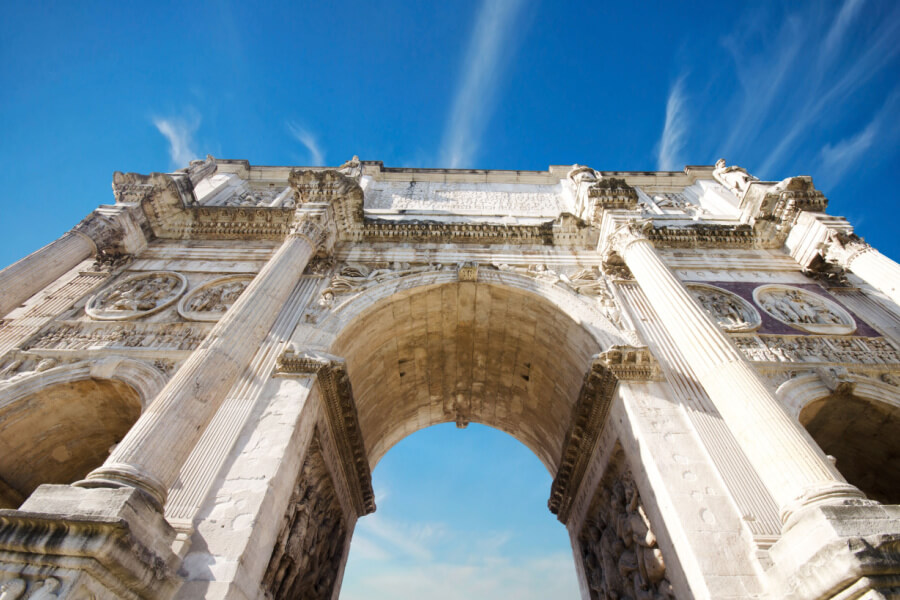The Arch of Constantine is the biggest triumphal arch among the ones that remained intact to this day in Rome. It was dedicated to the emperor Constantine the Great in honor of his victory during the Battle of Milvian Bridge.
The arch was built with reused materials that were taken from older imperial monuments that were built during the age of Trajan, Marcus Aurelius and Hadrian. This is considered to be the first time in history that materials were recycled!
Arch of Constantine in Rome: between history and construction
The Arch of Constantine is divided into three arches characterized by many reliefs and bas-reliefs on each side.
These decorations represent scenes of battles and the faces of the Emperors that were apparently remodeled to Emperor Constantine’s liking.
The oldest statues that you can find on the Arch of Constantine are the eight statues placed above the Corinthian columns made in white marble that were probably taken from the Forum of Trajan.
Belonging to Hadrian’s reign, we can find eight roundels above the lateral archways representing scenes of sacrifices or hunting.
Above the attic on the lateral archways, eight panels from the time of Marcus Aurelius can be found. These panels were probably taken from another triumphal arch built by Commodus, Marcus Aurelius’ son, in honor of his deceased father.
On both sides of the center of the arch, we can find an inscription that celebrates the wisdom and divine inspiration of Emperor Caesar Flavius Constantine Maximus.
Epochs
The following sculptures from the Constantinian period are located on the two sides:
- the ones located on the plinths of the columns, carved on the three sides depicting Victories;
- those present on the archivolts of the central fornix, always portraying the Victories;
- those on the archivolts of the minor fornices, depicting river gods;
- those on the keys of the arches, with allegorical figures;
- those on the inner walls of the smaller arches, with eight large busts of emperors in relief;
- those above the same small arches on the two short sides, with six long panels illustrating the campaign against Maxentius;
- on the two short sides are the two round ones with the representation of the Moon, in the west side, and of the Sun, in the east side.
The Roman Arch of Constantine according to modern criticism

The arch has been assigned by modern critics the function of synthesizing in monumental form the changes of the Constantinian era. Both in the iconographic details of the figurative program and in the large inscription that appears, identical, on the attic of both sides, clues are sought to reconstruct the events of 312, and to identify the symbols of the early conversion of Constantine and the refusal of the emperor to the traditional ascent as the final scene of the triumph, at the temple of Capitoline Jupiter. In the monument there is a voluntary figurative ambiguity, which would reflect the implementation of a compromise between the emperor’s Christian faith and the customs of pagan Rome.
→ A curiosity about Arch of Constantine:
During the 1960 Rome Olympics, the Arch of Constantine was the arrival point of the 42km marathon. The winner in the torchlight was Ethiopian Abebe Bikila who ran the entire race barefoot!
Book a private tour of Rome with us and discover more about the Arch of Constantin and the beautiful city of Rome!











